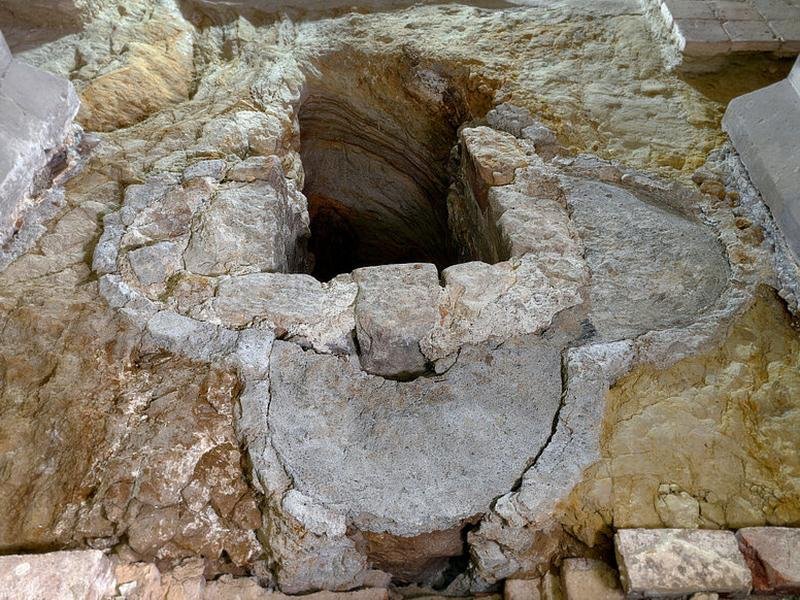Archaeologists in Quedlinburg, Germany, have uncovered the remains of a baptismal font from the 10th century, believed to have been used by members of the Ottonian Dynasty.
 The 10th century baptismal font site. Credit: Andrea Hörentrup / State Office for Heritage Management and Archaeology Saxony-Anhalt
The 10th century baptismal font site. Credit: Andrea Hörentrup / State Office for Heritage Management and Archaeology Saxony-Anhalt
Located in the crypt of the collegiate church of St. Servatius on the Stiftsberg, the baptismal font is thought to be the oldest evidence of its kind north of the Alps. Its quatrefoil shape, with four arches, suggests its use for baptisms within the Christian faith.
The font is approximately half a meter deep and two meters wide. Despite the font itself not surviving, the elaborate lining of the depression with gypsum suggests it was made of high-quality material.
Located in central Germany, Quedlinburg holds immense historical importance, particularly during the rule of the Ottonian Dynasty in the Holy Roman Empire. The uncovered baptismal font is thought to have played a crucial role in the religious ceremonies of this period.
 The location of the 10th-century baptismal font can be seen in the foreground. Credit: Andrea Hörentrup / State Office for Heritage Management and Archaeology Saxony-Anhalt
The location of the 10th-century baptismal font can be seen in the foreground. Credit: Andrea Hörentrup / State Office for Heritage Management and Archaeology Saxony-Anhalt
Experts speculate that prominent members of the ruling dynasty, including Duke Henry I of Bavaria, Matilda (daughter of Emperor Otto the Great and Empress Adelheid), and Adelheid I (daughter of Emperor Otto II and Empress Theophanu), may have been baptized at this site.
The rarity of archaeological evidence pertaining to baptism makes this discovery particularly significant. The baptismal rituals of the Ottonian period, as outlined in the Roman-Germanic pontifical, involved an annual collective baptism of infants or young children on Holy Saturday, the day before Easter Sunday. Candidates for baptism were immersed in water in the shape of a cross, with their heads oriented towards the quatrefoils. The ceremony, conducted by candlelight and accompanied by liturgical chants, symbolized the Christian belief in rebirth and salvation.
Rainer Robra, Minister of Culture and Head of the State Chancellery of Saxony-Anhalt expressed his appreciation for the discovery, stating, “There is a lot that makes the UNESCO World Heritage city of Quedlinburg unique, now there is another unique feature with the newly uncovered baptismal font site from the 10th century.”
The collegiate church of St. Servatii, along with the surrounding castle and old town, has been recognized as a UNESCO World Heritage Site since 1994. The collaborative efforts of archaeologists, historians, and preservationists have been instrumental in uncovering and documenting this significant piece of history.





